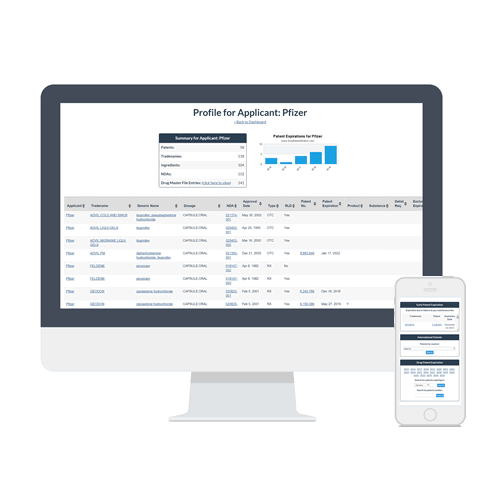
The development of generic drugs has become increasingly complex, requiring advanced analytical technologies to ensure the quality and efficacy of these products. Recent advancements in analytical technologies have significantly impacted the development of generic drugs, enabling more accurate and efficient analysis of complex drug products. This article will explore the latest developments in analytical technologies and their role in guiding generic drug development.
Table of Contents
The Importance of Analytical Technologies in Generic Drug Development
Generic drug development involves the reverse engineering of reference listed drugs (RLDs) to create bioequivalent products. This process, known as deformulation, relies heavily on analytical technologies to decode the physicochemical properties of the RLD and its constituent parts, including active pharmaceutical ingredients (APIs) and excipients. Analytical technologies provide drug developers with insights into how the RLD was manufactured, which is vital for creating a generic alternative that matches the therapeutic characteristics of the innovator drug.
Advanced Analytical Techniques
Several advanced analytical techniques have been developed to support generic drug development. These include:
Morphologically-Directed Raman Spectroscopy (MDRS): This technology combines automated analytical imaging and Raman spectroscopy to extract both morphological and chemical data about the multiple constituents of a drug. MDRS allows developers to understand particle shape and size distributions and differentiate and quantify chemical constituents.
Ultra-High-Performance Liquid Chromatography Tandem Mass Spectrometry (UHPLC-MS/MS): This powerful method is used to identify or verify the chemical structure of a sample and quantify it against a USP Reference Standard. UHPLC-MS/MS is particularly useful in the API selection process, where minute differences in samples need to be detected.
Process Analytical Technology (PAT): This system is designed to measure the quality and performance data of raw and in-process materials to ensure final product quality. PAT is essential in pharmaceutical continuous manufacturing (PCM), which increases the speed of medicine production and minimizes manual interventions that could introduce errors.
Rapid Microbial Tests (RMT): These methods detect microorganisms in immediate-use or short shelf-life therapeutic products, ideally in real-time or less than 24 hours before patient administration. RMT is critical in ensuring the safety of injectable products.
FDA Initiatives and Guidance
The Food and Drug Administration (FDA) has been actively involved in advancing generic drug development through various initiatives and guidance documents. The FDA’s Generic Drug User Fee Amendments (GDUFA) Science and Research Program focuses on common issues seen in abbreviated new drug applications (ANDAs), GDUFA III updates, and scientific issues related to product-specific guidance development. The program also examines innovative science and cutting-edge methodologies behind generic drug development.
The FDA has also established the Center for Research on Complex Generics to increase access to safe and effective complex generic drug products through collaborative research, training, and exchange. This center facilitates communication and information sharing among the FDA, academia, and generic drug companies, making complex analytical assays and pharmaceutical development expertise accessible to the generic industry.
Industry Collaboration and Standards
Industry collaboration and standards play a crucial role in ensuring the quality of generic drugs. The United States Pharmacopeia (USP) is actively collaborating with stakeholders to advance standards in advanced manufacturing techniques, such as PCM and 3D printing, and exploring technologies like digital therapeutics. USP is also exploring the use of various analytical technologies for testing the quality of medicines, dietary supplements, and foods.
Conclusion
Advances in analytical technologies have significantly impacted the development of generic drugs, enabling more accurate and efficient analysis of complex drug products. The use of advanced analytical techniques, such as MDRS, UHPLC-MS/MS, PAT, and RMT, has improved the quality and efficacy of generic drugs. The FDA’s initiatives and guidance documents, along with industry collaboration and standards, have further supported the development of safe and effective generic drug products.
The presence of generic drugs on the market helps to ensure availability of quality medicines at a lower cost to the American public. – FDA
References:
- FDA. (2023). Advancing Generic Drug Development: Translating Science to Approval 2023. Retrieved from https://www.fda.gov/drugs/news-events-human-drugs/advancing-generic-drug-development-translating-science-approval-2023-09132023
- FDA. (2022). Focus Area: Increasing Access to Complex Generic Drug Products. Retrieved from https://www.fda.gov/science-research/focus-areas-regulatory-science-report/focus-area-increasing-access-complex-generic-drug-products
- USP. (n.d.). New Manufacturing and Analytical Technologies. Retrieved from https://www.usp.org/our-science/new-manufacturing-and-analytics-technologies
- Roy, A., & Gorla, S. (2011). Analytical Strategies in the Development of Generic Drug Products: Role of Chromatography and Mass Spectrometry. Retrieved from https://www.chromatographyonline.com/view/analytical-strategies-development-generic-drug-products-role-chromatography-and-mass-spectrometry-0
- Pharma Focus Asia. (n.d.). Using Analytical Technology to Guide Generic Drug Development. Retrieved from https://www.pharmafocusasia.com/manufacturing/using-analytical-technology


